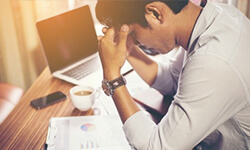Causes of Hypotension

Table of Contents
Low blood pressure is something that’s beneficial, wouldn’t you think? In most cases, it certainly is. But when low blood pressure becomes undesirably low, then that’s a cause for alarm. First, let’s take a look at what we mean by low blood pressure to understand it better.
What Is Low Blood Pressure Or Hypotension?

Blood pressure is always higher when the heart is pumping than when it is relaxing. Normal systolic blood pressure ranges between 90 and 120 mm Hg. Normal diastolic blood pressure falls between 60 and 80 mm Hg.
An optimal blood pressure level is a reading lower than 120/80 mm Hg. A high blood pressure level indicates a reading over 140/90 mm Hg. Unlike high blood pressure, low blood pressure is diagnosed by the signs and symptoms of low blood flow rather than a specific blood pressure level.
Basically, low blood pressure is when the flow of blood is too low to deliver enough oxygen and nutrients to vital organs such as the brain, heart, and kidney. In this situation, the organs cannot function normally and may be temporarily or permanently damaged.
If your blood pressure level is low and yet you show no signs or symptoms, it means you do not have low blood pressure and don’t require treatment. On the other hand, if you develop symptoms like dizziness, fainting, fatigue, blurred vision or confusion, it is an indication of low blood pressure or hypotension.
Let’s understand the different types of hypotension and what causes low blood pressure in each case.
What Are The Types Of Hypotension?

A type of low blood pressure known as neurally mediated hypotension can occur when someone stands for an extended period of time. Falling unconscious as a result of this is termed as vasovagal syncope.
Dizziness and black outs after eating (especially after consuming heavy-carb meals) are believed to be caused by blood settling in the vessels of the stomach and intestine, which is another type of hypotension.
Here’s a look at the causes of hypotension.
What Are The Causes Of Low Blood Pressure?
These are the common conditions that can cause low blood pressure:
A few medications that can cause low blood pressure, include:
- Diuretics
- Alpha-blockers
- Beta-blockers
- Drugs for Parkinson’s disease
- Antidepressants
- Drugs for erectile dysfunction
When Should You Be Concerned About Low Blood Pressure?

The first step to diagnosing low blood pressure is to compare your blood pressure in both the lying (supine) and standing positions. For an accurate diagnosis, note down the activity and the symptoms you faced at that time, before you visit your doctor.
Low blood pressure or hypotension is only a cause for worry if it drops low enough to lead to the damage of your vital organs.
If you’d like to go through more such healthcare articles on hypertension or hypotension, or if you wish to book a consultation with an experienced practitioner, check our website.
Disclaimer
The information contained in this article is to educate, spread awareness in relation to hypertension and other diseases to the public at large. The contents of this article are created and developed by BPinControl.in through its authors, which has necessary, authorisations, license, approvals, permits etc to allow usage of this articles on The Website. The views and opinions expressed in this article are views, opinions of the respective authors and are independently endorsed by doctors. Although great care has been taken in compiling and checking the information in this article, The Website shall not be responsible, or in any way liable for any errors, omissions or inaccuracies in this article whether arising from negligence or otherwise, or for any consequences arising therefrom. The content of this article is not a substitute for any medical advice. The Website shall not be held responsible or liable for any consequence arising out of reliance on the information provided in the article.









Comments (0)
No comments found.Add your comment